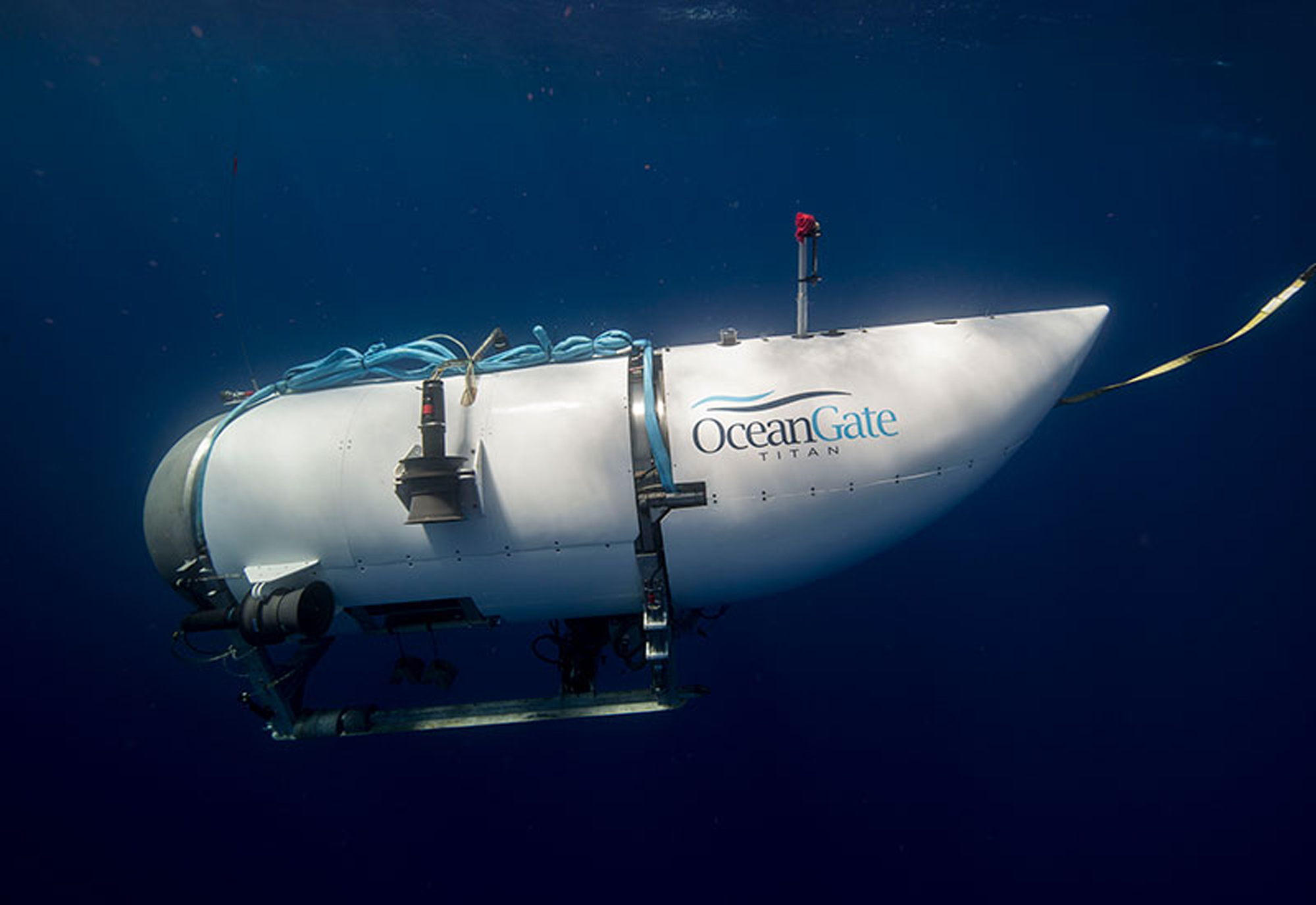PlayStation controller and acoustic messaging: How the missing Titanic tourist sub works
The submersible lost contact with its support ship Sunday morning.
The submersible that was reported missing while on a tour of the underwater wreckage of the Titanic is an unorthodox vessel with a relatively unproven history, according to company press materials and experts familiar with underwater vehicles.
News of the vessel's disappearance prompted a flurry of interest in the company OceanGate Inc. and its deep-sea submersible called the Titan.
The company's founder and CEO, Stockton Rush, who is one of the five people aboard the missing vessel, manned the Titan's first "validation dive" to 4,000 meters in 2018, according to the company. The company then began offering tourists the opportunity to dive to the depths of the Titanic in the following years, selling tickets for the 2023 journey for $250,000.
Here's what we know about how the submersible operates:

How does the submersible communicate?
Radio waves either bounce off the ocean or are absorbed by it, leaving submersibles with limited methods of communication, according to Jim Bellingham, a professor at Johns Hopkins and a pioneer in underwater robotics.
Submersibles like the Titan instead use underwater sounds to transmit data packets across the ocean, experts said. The receiving party aboard a support ship can then use a hydrophone to receive the data transmitted acoustically, which can then be converted into understandable information like text or audio, according to experts.
"The medium of that information traveling is sound, and there are issues relating to that because different layers of the ocean can effectively reflect sound," University of Portsmouth professor and deep-sea ecologist Nicolai Roterman told ABC News.
The Polar Prince, the Titan's support vessel, lost contact with the submersible on Sunday morning, according to the Coast Guard. The company notified the Coast Guard about the overdue vessel several hours later, at 5:40 p.m.

What kind of navigational tools does the submersible have?
Unlike a traveler in a car who can pinpoint their location within a few feet, submersibles have limited methods of determining their location, according to Bellingham.
"Once you go under the waves, without all of these other fancy tools, you have no clue where you are," Bellingham said.
A 2D sonar would allow the Titan's passengers to see what was around them that was not visible through the craft's viewport, and a Doppler velocity log would tell passengers how fast the submersible was moving relative to the sea floor, according to Bellingham. Passengers also have onboard sensors that determine the vessel's rate of acceleration, angle, depth and other factors, according to company materials and experts.
Navigators could use those tools and ocean maps to determine their location.
Was the submersible operated with a PlayStation controller?
In multiple interviews with media outlets, including Seattle ABC affiliate KOMO, Rush demonstrated that a pilot would navigate the Titan using a PlayStation game controller.
"I understand why for people, it's a little astonishing to think that this deep-diving submersible would have something as simple and commonplace as a video game controller," Harvard University professor of marine biology Peter Girguis told ABC News.
However, Girguis, who has traveled to depths of 10,000 feet in a submersible for research, believes the game remote is unlikely to be the source of the Titan's problems compared to its physical construction.
"It essentially just needs to go forwards, backward, left, right, up, down, so a game controller could be perfectly sufficient for that," Roterman added.
Is the pressure hull of the submersible safe?
"If you want to make the strongest, lightest structure underwater, make it a sphere," said Bellingham, who described the Titan's cylinder shape as the "second-best" option.
Roterman said the spherical design is "inherently safe" because the water pressure can apply equally to the vessel's surface.
By using a cylinder design, the Titan's designers opted for a slightly less secure shape in exchange for more passenger room, Roterman said. According to the vessel's specification sheet, the Titan could carry four passengers and a pilot.

To compensate for the large size of the submersible, designers of the Titan used carbon fiber -- the material used for the submersible's body, which is sealed with two titanium caps -- to ensure the vessel was neutrally buoyant, Bellingham said. Neutral buoyancy allows the submersible to maintain a certain depth with minimal use of the craft's electric thrusters, helping preserve valuable battery power, he said.
While the Titan's design and materials are essential variables, Bellingham stressed that the most critical variable is the condition of the vessel and its pressure hull.
The Titan's specification sheet boasts that the craft was equipped with a system to actively monitor the hull's health. With repeated launches and recoveries onto an external platform, submersibles like the Titan risk getting "beat up," according to Bellingham, which might impact the vessel's ability to perform.
"I can't emphasize this enough, the most important thing is stuff gets beat up," Bellingham said.
Why was the submersible's door bolted shut?
Most submersibles are equipped with an internally accessible hatch, according to Girguis, which allows occupants to open the door from inside the craft when the vessel surfaces.
These hatches do not risk opening while submerged because the water pressure forces the wedge-shaped hatch into the vessel's body.
"You could be sitting on the seafloor and you could do the hatch locking mechanism, and no water would come through because the pressure is holding that hatch down," Roterman said.
The Titan differs from other submersibles by using a hinged hatch that support staff would bolt shut externally, based on demonstrations of the submersible given to various media outlets.
"The challenge for these people is that even if their submersible [is] bobbing around at the surface, which it may well be, they're unable to get out of the hatch," Roterman said.



